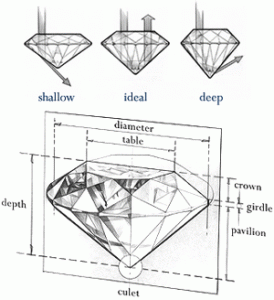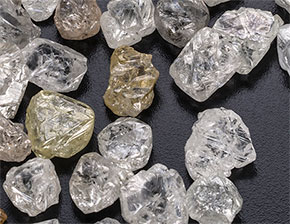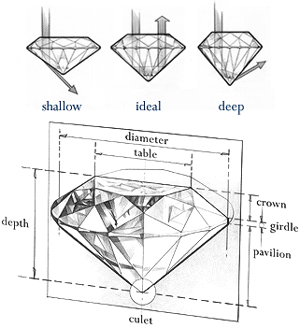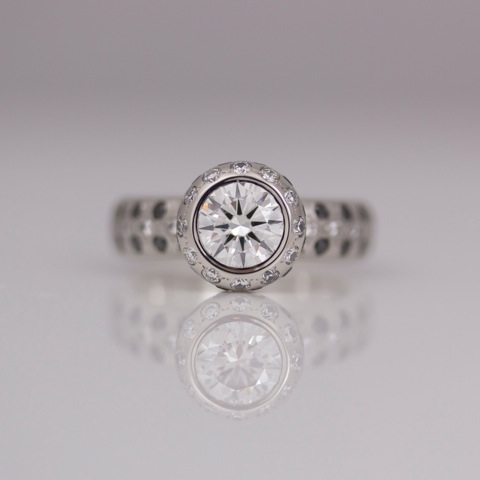The third and final instalment on Diamonds, covering carat & cut. Diamonds all you need to know part 3 cut & carat
Diamond Carat:

Easy to explain, a carat or ct is a unit of weight. 1ct = 0.02g, or a fifth of a gram. d
Carat is not a size, purely weight. I’ll explain more later, there is a ideal diameter to weight ratio, which is worked out to maximise a diamonds use of light, and beauty.
We divide a carat into points, 100 points = 1 carat, therefore 50 points = half a carat.
Different gemstones have different densities, sapphire and ruby are denser than diamond, so a carat ruby is smaller than a carat diamond, a carat emerald is larger than the diamond because the emerald is less dense.
This is another way of telling a diamond from its simulants, cz for example is denser, so the diameter and weight won’t tally with that of a diamond.
If a stone is well cut, there is an ideal diameter of length to weight ratio, to maximize a stones ability to utilize light, and therefore sparkle more,ultimately look more attractive.
Diamonds all you need to know part 3 cut & carat
Diamond Cut: Diamonds all you need to know part 3 cut & carat

Not just the shape of the diamond, but how accurately it is cut to maximize its beauty. When dealing with such high value materials, stone cutters don’t think how beautiful will this diamond be, but how much money will it make. Diamond cutting starts out a bit like pattern cutting, trying to maximize the rough. General rule of thumb, if you double it’s weight then you quadrupled its price. Ideally, you won’t to get as few stones as large as possible, rather than many smaller stones. Round brilliant cuts have been worked out to maximize a diamonds ability to reflect light. It’s an old Hatton Garden wives tale that a diamond needs to be set in claws, so it sparkles, nonsense. If a diamond is cut to the correct proportions, then it has complete internal reflection, the back facets working as a mirror, reflecting all the light back out of the top of the stones, for us to wonder at. You can make minor adjustments, to give the stone more rainbow/ dispersion, or sparkle/ brilliance, but a well-cut diamond looks much nicer and appears brighter than a badly cut stone.

The cut is often over looked as it isn’t as easy to quantify and the colour or clarity. I’ve seen some “interesting” stones generally purchased by a member of the public on holiday, or online. They can be a carat in weight, but having the diameter of a half carat, and being very deep, appearing to have a big dark tunnel in the middle, or the reverse a half carat looking like a carat, but looking very flat, having very little sparkle. Square stones can be more rhomboidal, the table and girdle not parrell, you might think why does that matter, they simply never look right, I think the cut of a diamond is much more important than any other charastic. I ensure all the diamonds I use, even those 1mm diameter are all well cut, and the overall look is far superior to those who have used lower quality stones. The shape of a stone also alters the way it works with the light. Princess cuts, are also know as square brilliants, they always have low large tables, thus very little rainbow dispersion, a baguette or emerald cut is a much older cut, carrying more weight, they don’t have much brilliance but do have amazing dispersion in the right light. Some marquise are long and thin, some shorter and wider, the ideal being 2-1, all having a bow tie effect of faceting in the middle. As I seem to keep saying you need to look at stones, imagining what they look like, or seeing photos or even worst computer generated images won’t give you a true likeness.
Diamonds look their best under candle light….or halogen.
Save
Save
Save
Save
Save


